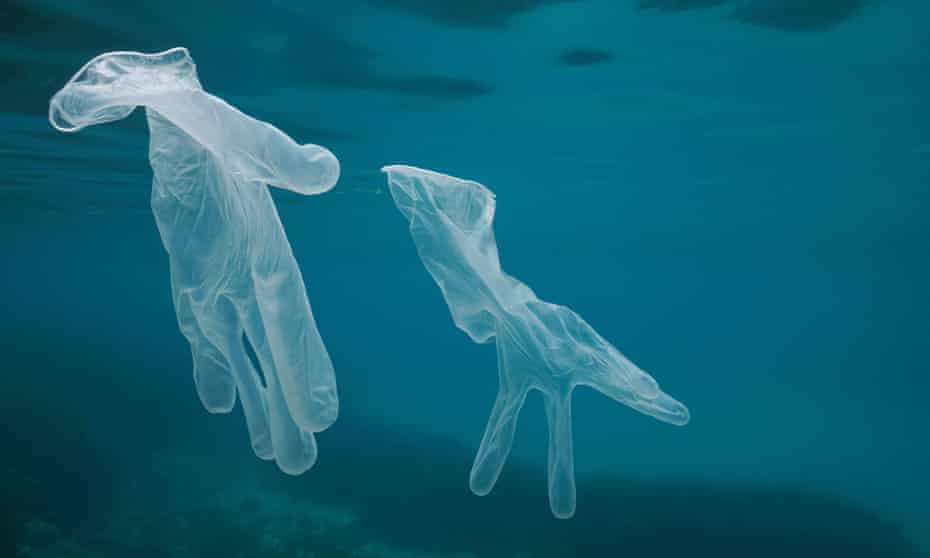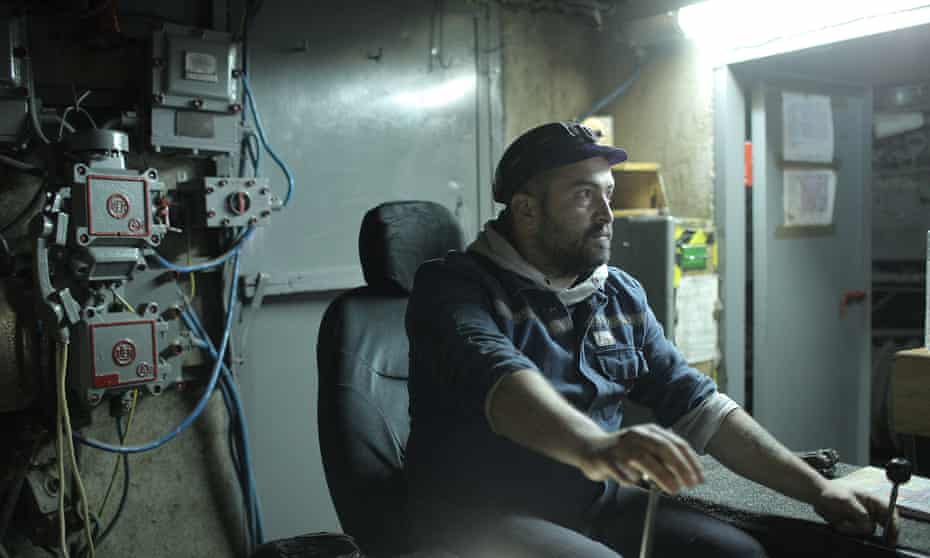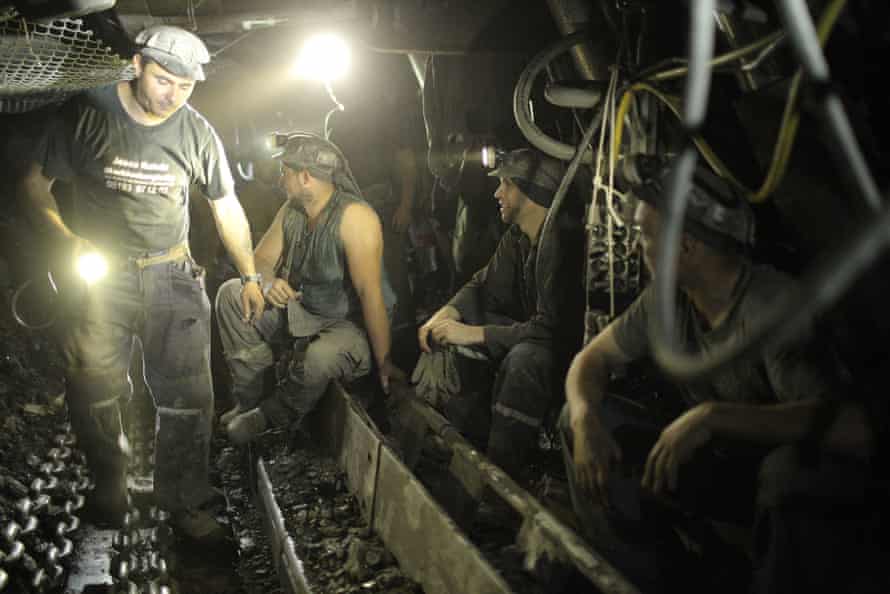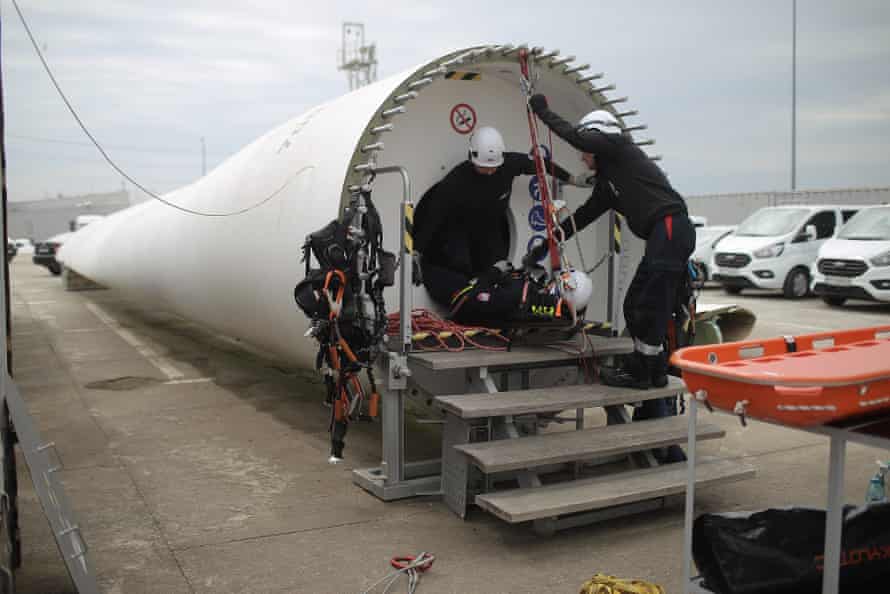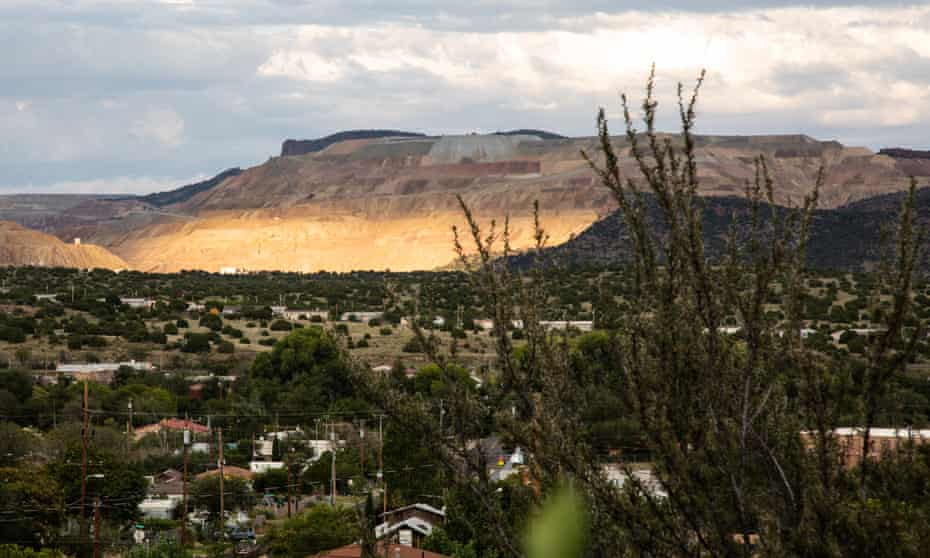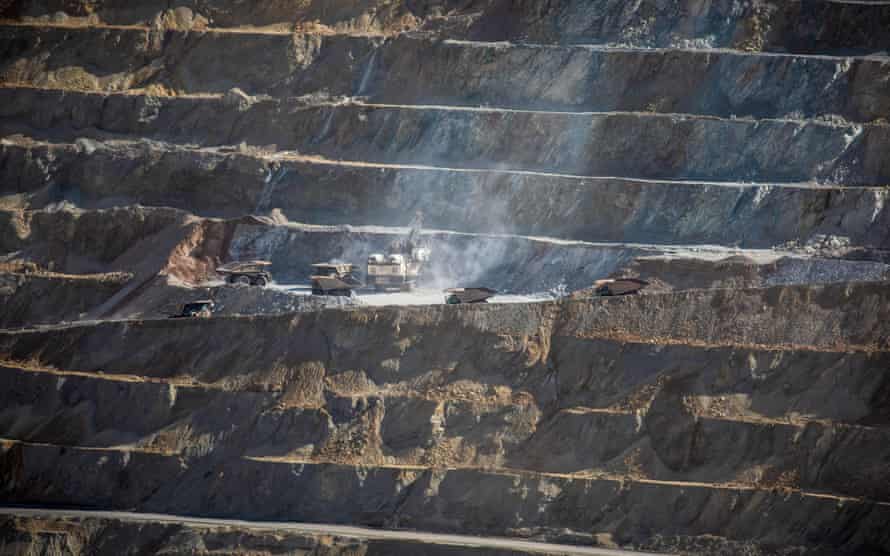Will the climate crisis force America to reconsider nuclear power?
Study assesses potential value of continued operation for Diablo Canyon
09 November 2021
Delaying the retirement of the Diablo Canyon nuclear power would reduce California's power sector carbon emissions, reduce reliance on gas, save billions in power system costs and bolster system reliability, according to a new report by authors from Stanford University, the Massachusetts Institute of Technology and LucidCatalyst. The plant could further increase its value to the state by providing multiple services including desalination and hydrogen production.
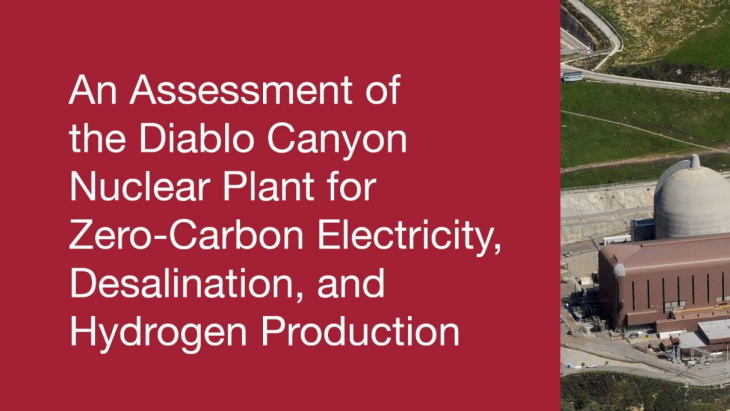
Diablo Canyon currently provides 8% of California's in-state electricity production and 15% of its carbon-free electricity production, but the state's Public Utilities Commission in January 2018 approved a multiparty settlement to fully and permanently shut the plant down when unit 2's operating licence expires in 2025. In its decision, the commission found that the plant was not cost effective to continue in operation, was not needed for system reliability, and that its value for reducing greenhouse gas emissions was "unclear", according to the authors of An Assessment of the Diablo Canyon Nuclear Plant for Zero-Carbon Electricity, Desalination, and Hydrogen Production.
"But in the intervening three and half years, several new developments have occurred," they note. These include: the signature of state legislation on zero-carbon generation and climate neutrality targets; recent studies highlighting the importance of always-available, non-weather-dependent generation capacity and reliable sources of zero-carbon fuels for hard-to-electrify sectors of the economy; blackouts and brownouts when electrical capacity has fallen below demand; mounting evidence of an increasing danger of severe water shortages; and state commitments to increase the share of land that is set aside for conservation purposes, limiting the amount of land available for energy production and other uses.
These developments led the joint study team of researchers from Stanford University and MIT to re-examine the potential value of Diablo Canyon in addressing these overlapping challenges. The team was assisted on hydrogen and multiple product research by Justin Aborn of energy analysis firm LucidCatalyst.
Delaying the retirement of the plant by ten years, to 2035, would reduce California power sector carbon emissions by more than 10% from 2017 levels and reduce reliance on gas, save USD2.6 billion in power system costs, and bolster system reliability to mitigate brownouts, the researchers found. "Even assuming rapid and unconstrained buildout of renewable energy, the continued operation of Diablo Canyon would significantly reduce California’s use of natural gas for electricity production from 2025 to 2035 by approximately 10.2 TWh per year. In doing so, Diablo Canyon would also reduce California carbon emissions by an average of 7 million tonnes (Mt) CO2 a year from 2025-2035," the report notes.
Operating the plant to 2045 and beyond could save up to USD21 billion in power system costs, potentially avoid the need to use save 90,000 acres of land for the siting of new solar photovoltaic capacity, and save up 50 Mt CO2 in cumulative emissions.
Multiple benefits
Diablo Canyon could be a "powerful driver of desalination to serve urban, industrial, and agricultural users," the study found. A desalination plant situated adjacent to Diablo Canyon would be able to augment fresh water supplies to the state as a whole and to critically under-served or overdrafted regions, at lower costs than existing or proposed desalination plants, while meeting environmental standards protecting marine life.
California "will likely need hundreds of millions of kilograms of hydrogen-based, zero-carbon fuels" annually to achieve a zero-carbon economy, the authors note. "The preliminary analysis here suggests that, with heat-assisted electrolysis, Diablo Canyon could produce 110 million kilograms of hydrogen annually at a cost of $2.01-2.46/kg. This is up to half less than the range of current costs of hydrogen produced from solar or wind power, while utilizing a small fraction of the space required for those other generation sources."
Hydrogen production at the Diablo Canyon site would also likely be cost-competitive with the hydrogen produced from natural gas with carbon capture, which is today's least expensive form of zero-carbon hydrogen production, they add.
The analysis also considered the potential to "repurpose" the nuclear plant to provide grid electricity, desalinated water, and hydrogen at the same time, and concluded that the production of these three products could "substantially increase" the value of Diablo Canyon by an amount equivalent to USD70/MWh, or even higher. "In a polygeneration configuration, the electricity output of Diablo Canyon plant could be directed to provide varying amounts of electricity to the power grid, desalination or hydrogen production, respectively, to maximise revenue, provide grid reliability, or meet other objectives, as needed," the report notes.
Repurposing the plant would not be without "many and considerable" challenges, including at the reinitiating the federal plant relicensing process. Chief among the challenges at the state level would be the need to obtain approval of a newly engineered water intake system as well as other approvals needed for the construction and operation of desalination and hydrogen production facilities, and supporting infrastructure. Stakeholders would need to be re-engaged, and "there will also likely be opposition in principle among some to the use of nuclear energy in any form, for any purpose," they note.
"While these challenges are substantial, so are the potential gains," they say. "This preliminary analysis is intended to allow policymakers and the public to consider weighing the benefits and tradeoffs associated with maintaining or rededicating Diablo Canyon in light of other new and urgent challenges that face California."
They conclude: "This study was not intended to be and should not be considered to be a definitive analysis of those benefits and tradeoffs. That will require further investigation. But the authors submit that the conclusions of this report present sufficient grounds for further study and debate by setting forth a prima facie case for extending the operations of the Diablo Canyon nuclear plant."
Funding for the project came from the MIT Center for Energy and Environmental Policy Research, the Abdul Latif Jameel Water and Food Systems Lab, the MIT Center for Advanced Nuclear Energy, the Rothrock Family Fund, the Pritzker Innovation Fund, The Rodel Foundation, Ross Koningstein, and Zachary Bogue & Matt Ocko.
Diablo Canyon's two pressurised water reactors are owned and operated by Pacific Gas and Electric Company.
The report can be downloaded here.
Researched and written by World Nuclear News
‘Officials so worried about power and emissions, have this gem they don’t really want anymore’

Diablo Canyon Nuclear Power Plant. (Photo: Wikipedia via Flickr)
By Evan Symon, November 9, 2021 11:49 am
A new Stanford University/Massachusetts Institute of Technology (MIT) study released on Monday found that an extending the life of Diablo Canyon Nuclear Power Plant past it’s planned 2025 closure date would help the state greatly reduce carbon emissions and meet state climate goals.
For decades, nuclear power plants have been slowly been taken offline in California. Ever since the closure of the San Onofre nuclear plant in 2013, Diablo Canyon, located in San Luis Obispo County, has been the sole remaining power plant in the state.
Following the Fukashima Daiichi disaster in Japan in 2011, pressure from environmental and local public groups fought against keeping the plant open. Concerns over earthquakes, nuclear waste pollution, and other factors convinced the California Public Utilities Commission (CPUC) to close the plant by 2025.
While legislators have been scrambling to keep it open, largely due to California being behind on green power generation and the plant accounting for 8% of all power generated in the state, it is still on track to close by mid-decade.
The Stanford/MIT Study released Monday bucked the recent trend of moving away from nuclear power, finding that keeping Diablo Canyon open until 2045 would not only help power and environmental concerns, but could also significantly help California battle drought in the future.
According to the report, extending the life of the plant would save $21 billion in power systems costs, would give more time for California to build up green energy plants, would help California meet the growing demand of power provided to electric vehicles, reduce power sector carbon emissions by 10%, and largely prevent brownouts in the future.
“Delaying the retirement of Diablo Canyon to 2035 would reduce California power sector carbon emissions by more than 10% from 2017 levels and reduce reliance on gas, save $2.6 Billion in power system costs, and bolster system reliability to mitigate brownouts,” noted the study. “If operated to 2045 and beyond, Diablo Canyon could save up to $21 Billion in power system costs and spare 90,000 acres of land from use for energy production, while meeting coastal protection requirements.”
The additional, unplanned energy, if linked to a new desalination and/or hydrogen plant, would also provide more fresh water being brought back into reservoirs than any current state plan and would drastically reduce green energy costs while working on far less needed land for future green energy production.
Positives, negatives of keeping Diablo Canyon open until 2045
The report also hinted at a possible return of more nuclear plants allowing for more of an ease into California’s 2045 carbon emission-free power goal.
“In order to combat climate change in the best possible way, I think nuclear power is something that we should really consider and ask PG&E to reconsider,” said former Secretary of Energy and current Stanford Professor Steven Chu. “When Japan and Germany shut nuclear power plants in recent years it led to a rise in carbon emissions from fossil fuels.”
Other experts agree that keeping Diablo Canyon open would bring vastly more positives than negatives.
“Our nuclear energy technology has greatly reduced the chances of a meltdown or a similar disaster from occurring,” said Sal Braith, a nuclear engineer who worked at several nuclear plants in the Northeast, in a Globe interview on Tuesday. “All the big incidents people think of, like Three Mile Island, or Chernobyl, or Fukashima, they were all in plants with older technology. Upgrading Diablo Canyon, which still has a sound design that still holds up today, would do wonders for California. They’re so worried about power and emissions in the future, well, they have this gem they don’t really want anymore. The solution to their problems is literally right there.”
“And everything the report brings up, like lowering emissions and connecting to other environmentally friendly things, we’ve been screaming that for years for states to pick up on that. California has an easier time for emissions goals to be met, it staves off power concerns for awhile, the water crisis is largely alleviated, and a lot of jobs are created. And if more are built, it only increases those by many-fold.”
However, environmental opponents stressed that even with the report showing many positives, the negatives are still too much for any kind of reconsideration.
“It is enticing, I have to admit that,” said Melissa Key, an environmental lawyer who has represented environmental groups against energy companies with nuclear power plants in the past, to the Globe on Tuesday. “But every year of operation means the greater chance of something going wrong. And I don’t think that I even need to tell you the dangers of what a major nuclear accident, especially one so close to fault lines, can do.”
“This is the last one in the state, and for the good of California, it needs to stop. Solar, wind, and other energies will be able to pick up the slack by 2025.”
As of Tuesday, the Stanford/MIT has yet to illicit a response from California energy officials.
Keeping California’s Last Nuclear Plant Can Save Money, Climate: MIT-Stanford Study
Researchers say keeping it open could cut emissions and costs
November 8, 2021

California’s last nuclear power plant, scheduled to close in 2025, could aid the fight against climate change, cut energy costs and provide water to the parched state if allowed to stay open, according to a new study.
The findings won the support of former U.S. Energy Secretary Steven Chu, who in a web presentation said countries prematurely shutting down nuclear plants ended up using more fossil fuels instead.
“We are not in a position in the near-term future to go to 100% renewable energy,” said Chu, who was not one of the report’s authors. “We will need some power that we can turn on and dispatch at will, and that leaves two choices: fossil fuel or nuclear.”
PG&E Corp. reached an agreement with environmental groups in 2016 to shutter the Diablo Canyon nuclear plant when its operating licenses expire, saying the plant’s energy would no longer be needed as cheap renewable power flooded onto the state’s grid. Since then, however, California’s energy supply has grown strained, with the state veering close to blackouts during heat waves.
Researchers from Stanford University and the Massachusetts Institute of Technology said in the study released Monday that keeping Diablo Canyon open through 2035 would cut greenhouse-gas emissions from California’s power sector 10% each year, by reducing the amount of electricity needed from natural-gas plants. It would also save $2.6 billion for utility ratepayers. Keep Diablo Canyon open until 2045, and the savings would grow to $21 billion, they said. The report’s authors also examined using the coastal power plant’s electricity to produce hydrogen or desalinate sea water.
Read more: California Taps Green Power to Replace Nuclear, Gas Plants
Keeping Diablo open would require a license extension from the Nuclear Regulatory Commission as well as the approval of California regulators -- not to mention a change of heart from PG&E. A company representative noted the plan to close the plant had already been approved by California officials.
“The state has made clear its position on nuclear energy,” PG&E spokeswoman Suzanne Hosn said in an email. “Our focus therefore remains on safely and reliably operating the plant until the end of its NRC licenses.”
Chu called PG&E’s decision to close the plant “distressing.” The plant, which is nearly surrounded by fault lines discovered after construction began, faced decades of opposition, which swelled again after the 2011 Fukushima nuclear accident in Japan. But Diablo Canyon also won the support of some environmentalists convinced it was needed to fight global warming.
“Nuclear power is something we should reconsider, and we should ask PG&E to reconsider,” Chu said.


